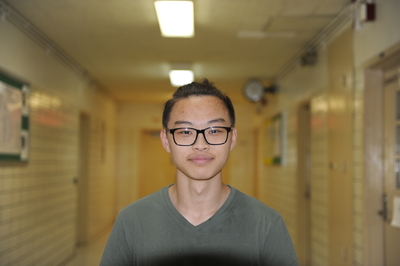From ‘Killing Eve’ to Almost Winning an Emmy
A Step Forward in Asian Representation

“With the exception of ‘The Joy Luck Club,’ there hasn’t been significant Asian representation in American media since then. It’s only recently that minority representation has been promoted,” said Howard Wang ’20.
You might know her as Cristina Yang, the sarcastic genius surgeon from Grey’s Anatomy. Born on July 20, 1971, Sandra Oh has been in multiple noteworthy roles, but none are of the same magnitude as her most recent role as Eve Polastri. Killing Eve is a thriller and a drama focused on two women who are obsessed with each other: Eve Polastri, a former MI5 officer and Villanelle, a beautifully dangerous assassin. They follow each other in a game of cat and mouse, with several plot twists thrown in. Suspenseful and dramatic, this show puts Oh’s acting skills to good use, rightfully earning her a nomination for a Primetime Emmy Award for Outstanding Leading Actress in a Drama Series. If she had won, Oh would have been the very first Asian American to win this prestigious award.
It seems odd that only now, in 2018, that this nomination was given to an Asian American. Should not our entertainment industry be more progressive by now? This is not the case, with only 3.1% of film roles and only 5% of roles in TV shows belonging to Asians. The Asian population has always been underrepresented in American media, with characters consistently getting whitewashed and misrepresented.
“It really stings to know that you could have been represented, but the entertainment industry would rather give it to someone who is already over represented,” said Haley Sim ’20.
Maggie Lai ’20 said, “I hate it when they replace characters who are explicitly Asian with white actors. It’s not right.” And it really is not, replacing the ethnicity of a character is like taking their backstory away and ripping away a chunk of their identity. It would be like making Tom the mouse and Jerry the cat, undermining the whole plot.
“The Ancient One, Ghost in the Shell, and the Great Wall starring Matt Damon are all examples of Asian American whitewashing,” said Howard Wang ’20. However, whitewashing is not limited to just the Ancient One from Doctor Strange and just those films; the adaptation of Avatar, the Monkey King, and Memoirs of a Geisha are all prime examples of media whitewashing Asian culture. In fact, the book Memoirs of a Geisha, which was written by a white author, contained large amounts of incorrect information and inaccurately portrayed geishas, replacing reality with colonialist fabrication.
“Asians have consistently been underrepresented, and with the issue of whitewashing, it really stings to know that you could have been represented, but the entertainment industry would rather give it to someone who is already over represented,” said Haley Sim ’20.
Roles such as Mr. Yunioshi in Breakfast at Tiffany’s, which was played by Mickey Rooney, illustrate how the entertainment industry has been consistently handing over opportunities that should have been given to the underrepresented to those that have not been able to speak up and show their true self. While Rooney is an actor with an impeccable portfolio, his role in Breakfast at Tiffany’s portrayed a caricature of a Japanese man, scrunching up his face and squinting his eyes, which simply further illustrates the way that Hollywood has stereotyped Asian characters to act a certain way.
However, this does not mean that American media is not improving their representation of minorities. New shows like Fresh Off the Boat and Kim’s Convenience, as well as movies like To All the Boys I’ve Loved Before and Crazy Rich Asians have broached the issue of under-representation to light, showcasing Asian culture the right way without reinforcing stereotypes onto the role of an Asian character.
This is why Sandra Oh’s nomination is so monumental; she is not an Asian actress playing a small background role or even a supporting role. She is the main lead in a popular television series. Not the nerdy Asian kid at school, not the Mathlete captain, not the waitress that could not speak English, not the stereotype that American television has been so adamant about forcing us into being, the box that has limited what we can become.
Olivia Chen is the Chief Graphic Designer/Layout Editor for ‘The Science Survey’ and Managing Editor for ‘The Observatory’. She works with her...
